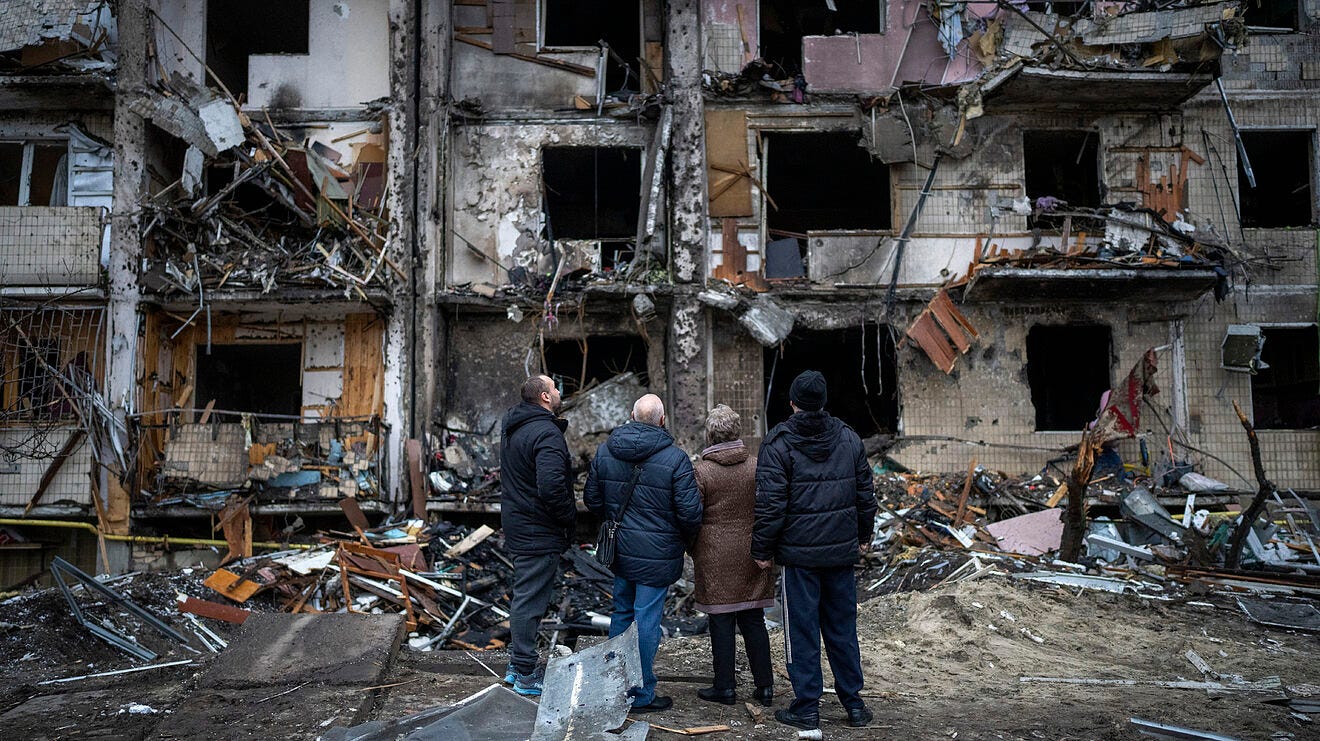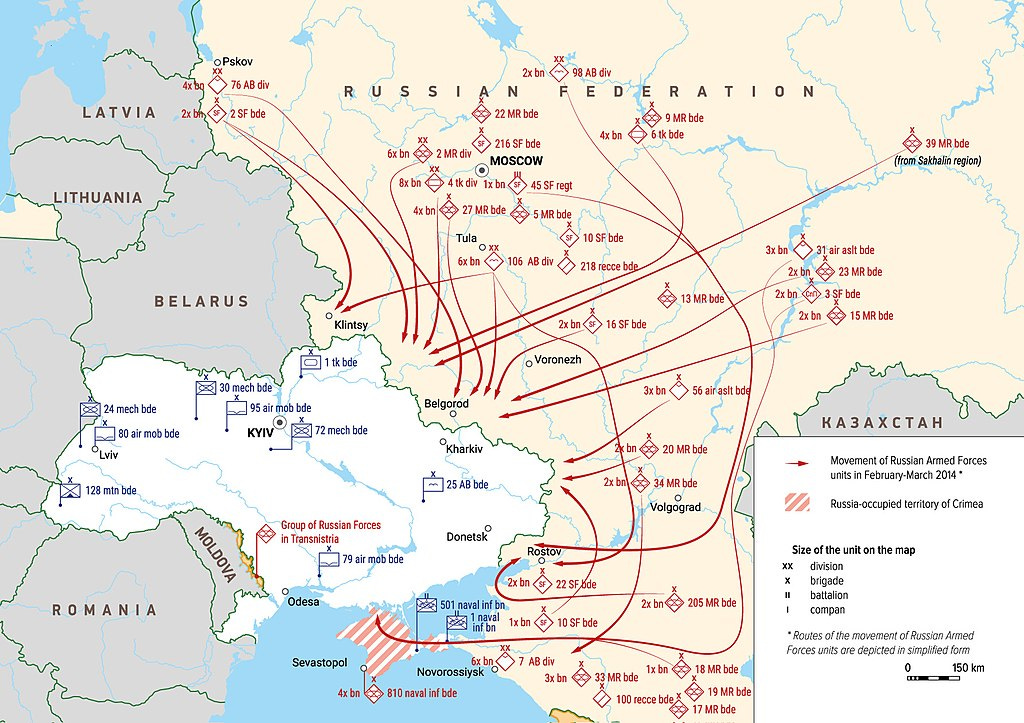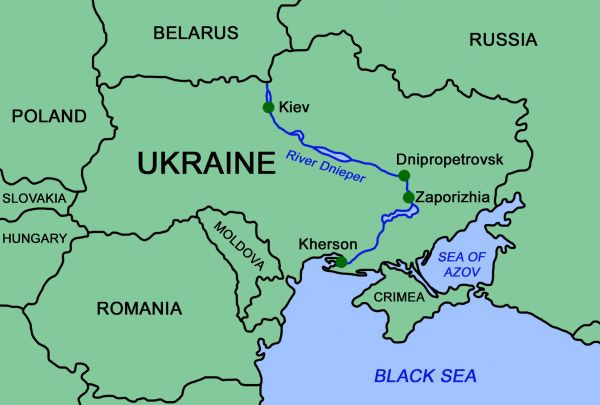Dear Readers,
The war in Ukraine is now 10 days old. There has been human misery, death, and destruction around Ukraine. The war does not seem to be ending soon. Both sides are adamant on their stance and none seem to be relenting. Two rounds of talks have failed to bring any ceasefire. The announced cease-fire by Russia also did not hold. The media seems to narrate conflicting stories. No one knows how the future will fan out for Ukraine. The second piece of this series on Ukraine tries to answer some of the questions which hound all of us. Hope you will enjoy reading it.
UKRAINE CRISIS -II
Finally, Russia invaded Ukraine on 24 Feb 22, thus lifting the veil on the prevailing uncertainty and hope. Despite the US and NATO warnings about a Russian invasion, the actual offensive did surprise many countries, including Germany and France. They were hoping that Putin would make at best launch an offensive more as a face-saving ploy than try and annex the whole of Ukraine. When the assault came, it came from three different directions and surprised many for its scale and audacity. The lack of many facets of fighting a conventional war in the Phase -I of the war has surprised many strategic thinkers and military experts. The Ukraine war has reached the end of the second Phase, awaiting the launch of the Final Phase of the war. And with that, it has raised more questions than ever before. What is in Putin’s mind? Will he ever stop or continue relentlessly till he gets his military and political objectives, irrespective of the costs? What is the end state he wishes to reach? Is the Russian military underprepared or unwilling to fight? Why was the progress of the operations so slow? These questions and many more haunt students of military history and geopolitics. The second article on Ukraine explores to find answers to some of the questions stated above.
Today the day of writing this article is 05 Mar 2022. It is the 10th day of the Ukraine Russia war. It is believed that the Russian are following a plan, and as per that, they may be entering the final Phase of the war. The Russian armed forces are considered at par with the best that NATO has. They are well equipped and well trained. Before the war started, 175,000 troops surrounded Ukraine from three sides: The North, East, and the South. It is hard to find the actual dispositions of the Russian formations. Still, it is believed that its composition and size are the same as they existed in 2014-2015 during the Crimean crisis. And if that is taken as a basis, then Russia does have a formidable force in all these three directions. There is at least an Airborne Division on all these three thrust lines coupled with one SF (Special Forces) brigade. The array of forces is truly impressive. For this reason, it is surprising why Russia could not make much of a decisive foray in Ukraine in Phase- I of the war. The map with the dispositions below adequately illustrates this point.
In Feb’22
The lack of progress in the First Phase of war, roughly from 24 Feb 22 to 01 Mar 22, has baffled all Russian watchers. Many have questioned the Russian strategy, their ability to fight, young soldiers’ low morale, etc. While all these are worth examining, the most serious question is: what is in Putin’s mind? His thought process was not evident in the first four days of the war. It gave hope of an early cease-fire and halting of hostilities. Yet these expectations were belied. A lot is being spoken about the information warfare running before the invasion and concurrently running as the Russian forces are advancing into Ukraine. The general belief is that this campaign, led chiefly by the western media, has favoured Ukraine. All the images and stories emerging out of Ukraine suggest large-scale destruction by Russian bombardment and senseless killing of an innocent population. Social media videos have shown great resistance by the Ukrainians in the face of stiff Russian attacks. No one has seen the Russian side of the story, blacked out by the western media news channels and the print media. The points about the low morale of young soldiers and the Russian army’s fighting capability: it would be foolhardy to think, they either lack the will or the ability to fight. Isolated incidents do not assess the entire army.
A sizeable section of the population worldwide, and even in India believe that while President Putin cannot be condoned for his act of a naked invasion of Ukraine, he has a legitimate grievance against NATO for its hunger to expand eastwards and come at the doorsteps of Russia. The exact section also believes that the Russian armed forces are moving based on a well-made plan which has to a large extent, met its timelines. As per this section, the Russians have avoided the destruction of civilian infrastructure and the population as a deliberate strategy, in line with their overall plan. It would explain the shyness shown by the Russians to use their vast air force. Most of their aircraft, totalling over 300 against the Ukrainian borders, are silently sitting in their bases around Ukraine. Western experts are baffled at the reluctance of the Russians to use their air force for the destruction of the Ukraine ground forces at the beginning of their campaign. Many silly reasons have been attributed to the lack of employment of their air assets. Lack of training hours rendering the Russian pilots unsure about their flying skills could be the silliest of them. The Russian pilots are as good as any of their NATO counterparts. Poor inventory of precision bombs with the air force is another reason attributed. These and others don’t sound convincing. The Russian air force was overactive in their battles of bombing ISIS and fighting the NATO supported rebels, in Syria.
What is Putin’s end state?
As the war gets in the decisive Phase, it does appear that the Russians have a well thought out strategy and objective. Capturing Kyiv and important cities and bringing about a regime change seems the most likely objective. President Zelensky of Ukraine appears unlikely to give up the fight. The Russians aim to capture Kyiv and capture the government buildings and hope that by then, Zelensky is either eliminated or has escaped. The final Phase is bound to see the siege of Kyiv and other important towns like Kharkiv. The plan is to break the Ukrainian will to fight by denying them necessities like water, food, and electricity. On the face of it, the Russians appear to endeavour to minimise the civilian casualty and damage to infrastructure. The aim is to resurrect the capital at the earliest once the regime change is affected. By the end of the second Phase, Russia has gained an important victory by capturing the port town of Mariupol. The capture has allowed them to create a land bridge between the Crimean Peninsula and the western border of Russia. It will enable the control of the sea of Azov. This control would allow the Russian navy to dominate the entire southern coastline of Ukraine along the Black sea. With no navy, Ukraine has lost any sea route for its trade and commerce and would be at the mercy of the Russians for seafaring.
If the above is a reality, the Russian campaign seems logical. The Russians have used precision-guided weapons to destroy the targets of interest. Their reluctance to use air assets against ground targets may change in future, as the air force waits to be unleashed. It appears the Russians would avoid physically attacking Kyiv for the apparent difficulties of fighting in an urban area. The air force will come into play if the desired effect is not realised through a siege. The use of airborne troops and special forces should increase in the final Phase of the campaign. From a military campaign point of view, the thrust into Kharkiv from the north is very significant. One, it allows a pincer to move to Kyiv from the east and south-east and second, it will enable the Russian forces to capture areas east of the Dnieper River which is a psychological frontier between the eastern part of Ukraine, which is predominantly pro-Russian and western Ukraine; where the population is more inclined towards the NATO. Should the primary political objectives fail, the integration of the eastern regions of Ukraine with Russia would be a great victory to boast of.
Ukrainians Resistance
A lot has come out in the media about Ukraine’s stubborn resistance to the advancing Russian forces. While credit must be given to ordinary Ukrainians to show grit and determination against a more potent adversarial force. Yet the media report of civilians holding their own against the advancing Russian forces seem exaggerated. Slowing the advance of Russian forces is more on account of their long logistic chains and lack of coordination in enemy territory rather than the civilians with arms. The Ukraine armed forces are deployed mainly around the major cities and towns and possible choke points to fight the Russians. Since the battle of cities and towns has yet not begun thus, a significant portion of the Ukraine defence forces is engaged in hit and run tactics rather than a bloody defensive battle. This assessment is a conjecture as more would be known once the war progresses and more details are put in the public domain. Ukraine ground forces are about nine brigade’s strength deployed throughout Ukraine. The Ukraine air force is all but grounded. Their ability to inflict damage to Russian ground troops is almost negligent. The Ukraine navy has ceased to exist since 2014 after the annexation of Crimea.
It would thus seem that the rhetoric about Ukrainians giving a tough fight to the Russians has to be weighed in light of the overall Russian strategy of how to achieve their final war objectives in Ukraine. What is of consequence is what state the Russians leave Ukraine once the war is over? Sooner or later, the Russians have to leave as they cannot stay forever. In the case of installing a puppet regime in Ukraine, going for the government would be tough. The civilians being armed by the NATO and Ukraine army is a harbinger of a prolonged civil war in the coming days. It probably should be the most worrying future development for the Russian president. From all reasonable assessments for the future, this seems the most plausible scenario: a low-grade insurgency in Ukraine while a government rules. The division of Ukraine into eastern pro-Russian regions and NATO influenced western Ukraine is most likely breeding ground for a future civil conflict.
Conclusion
As the media highlights, is this the beginning of a third world war? No. While the media can bring many parallels and suggest similarities about how the other two started. The world is far wiser today. Maybe this explains the lack of desire of the NATO countries to come to the rescue of Ukraine by joining the fight against Russia. President Zelensky of Ukraine holds the key. His removal from Ukraine by any means would signal the beginning of the end of the Ukraine war. NATO countries may have given Ukraine a false hope of a membership, which President Zelensky bought hook line and sinker. In reality, Ukraine would never become a NATO member. This was a redline, which any wise Ukrainian leader should have assessed. The failure to see the redlines regarding Russia has cost Ukraine this war. The only way to end it is to accommodate the Russian fears somehow and provide guarantees for the future. This option may already seem optimistic as both sides refuse to budge. The solution thus is bound to come with more blood loss and redrawing of maps in eastern Europe.








A very well penned article. Is it the security of Russia or the continuous quest for power that’s driving this war! Putin is running an autocracy with his oligarchs, his policy; for my friends everything, for my opponents the law. Would we want this kind of a world order or a democratic government, better even with flaws compared with an autocratic dictatorship! That’s why Putin needs to be defeated, hopefully there’ll be an uprising against him in Russia.
A comprehensive analysis of the Ukraine crisis. As a layman, I think that the war will continue unabated. It seems in Moscow the common Russian is not in favour of this conflict.